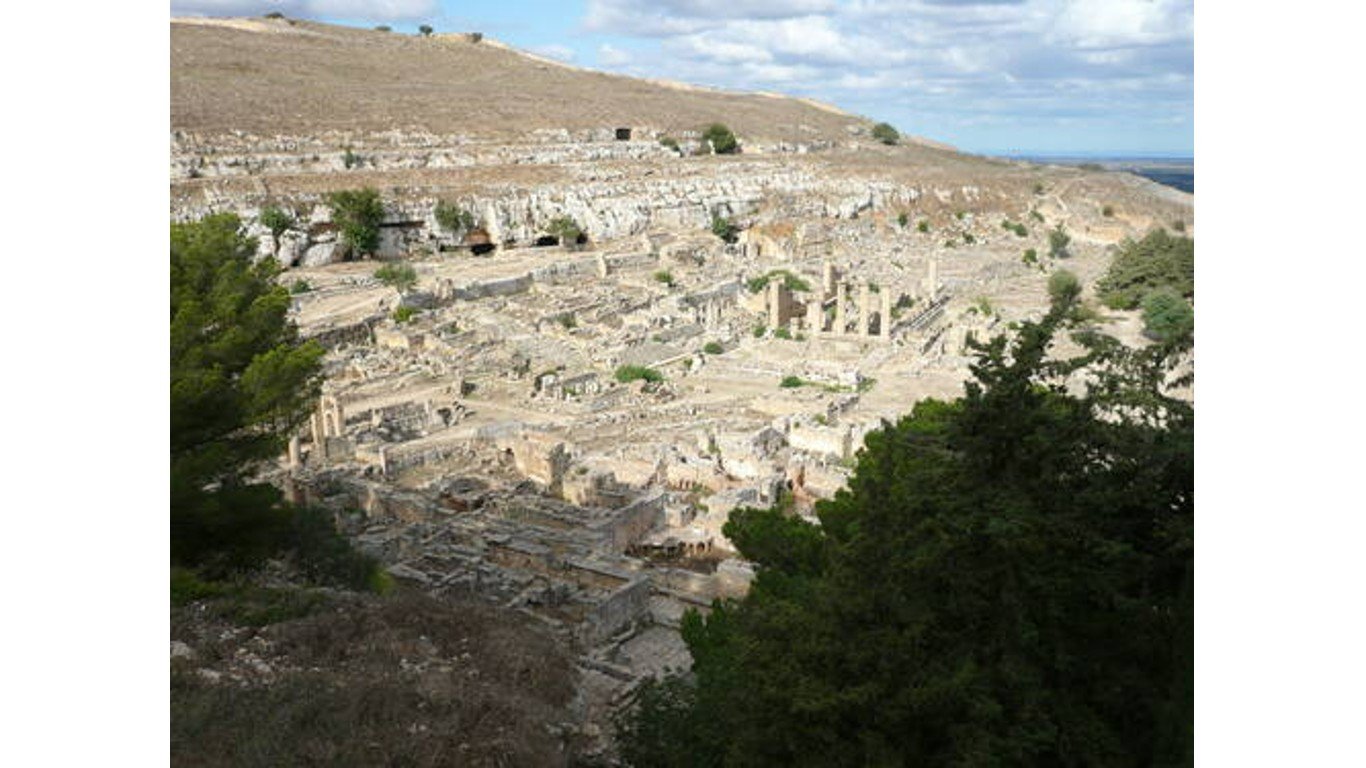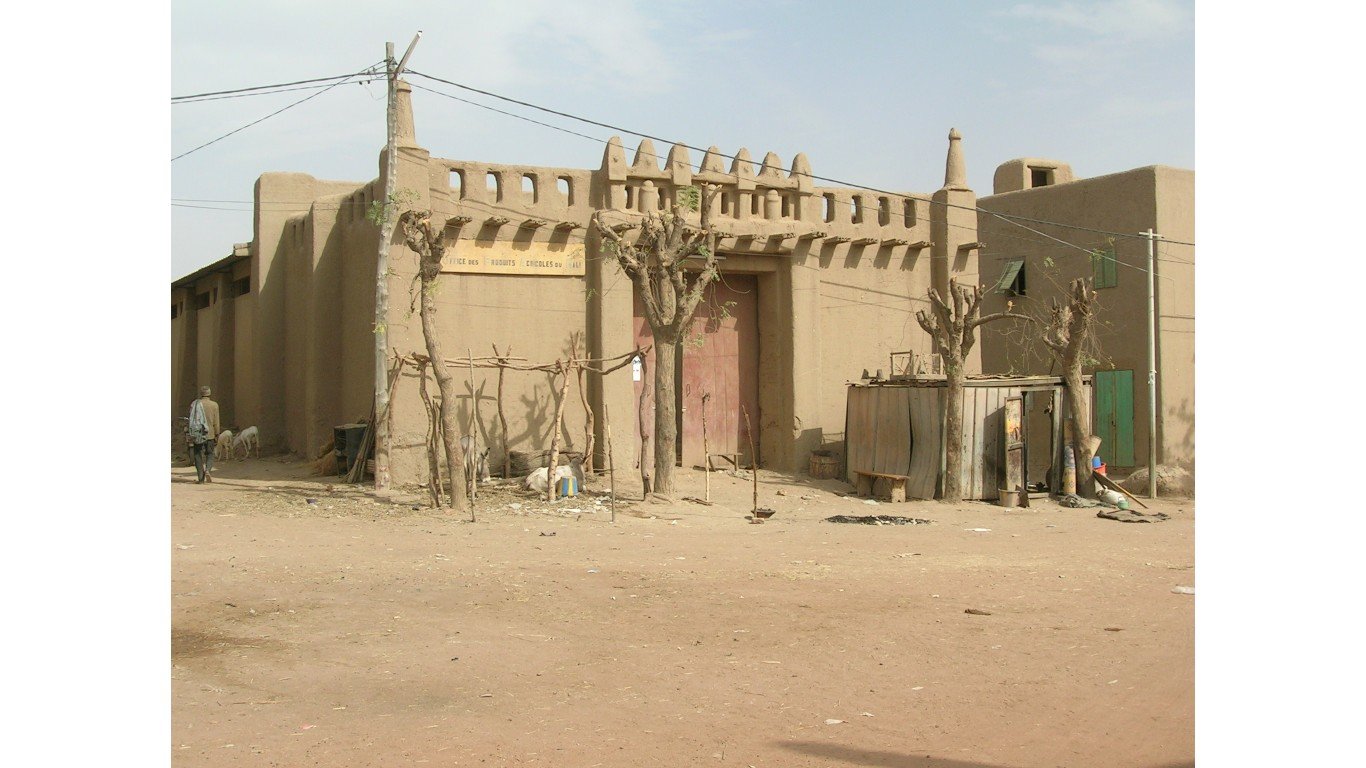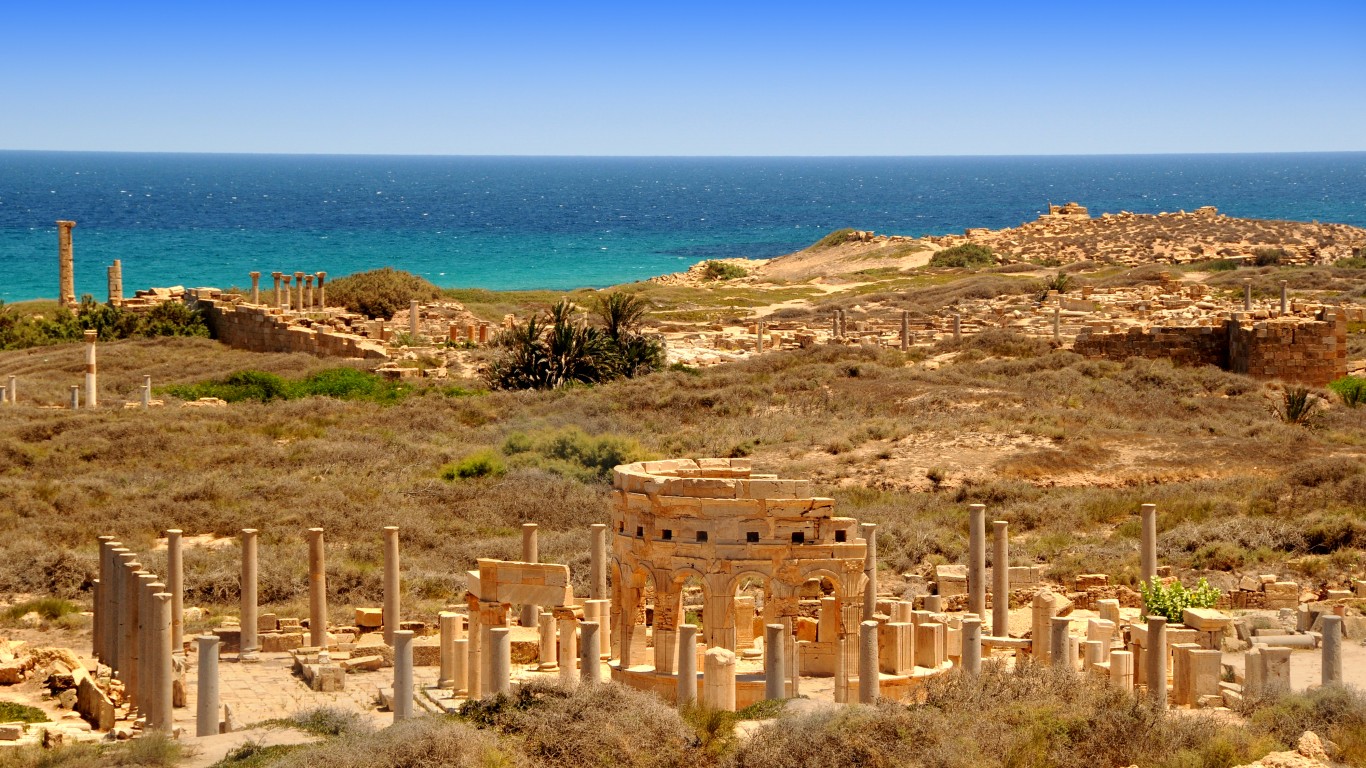
Archaeological Site of Leptis Magna (2016)
> Location: Libya
Leptis Magna was one of the most beautiful cities in ancient Rome, featuring soaring public monuments, residential neighborhoods, marketplaces, and shops. Roman emperor Septimius Severus was born here and expanded the city. The site is one of five in Libya on the List of World Heritage in Danger because of political instability and armed conflict.
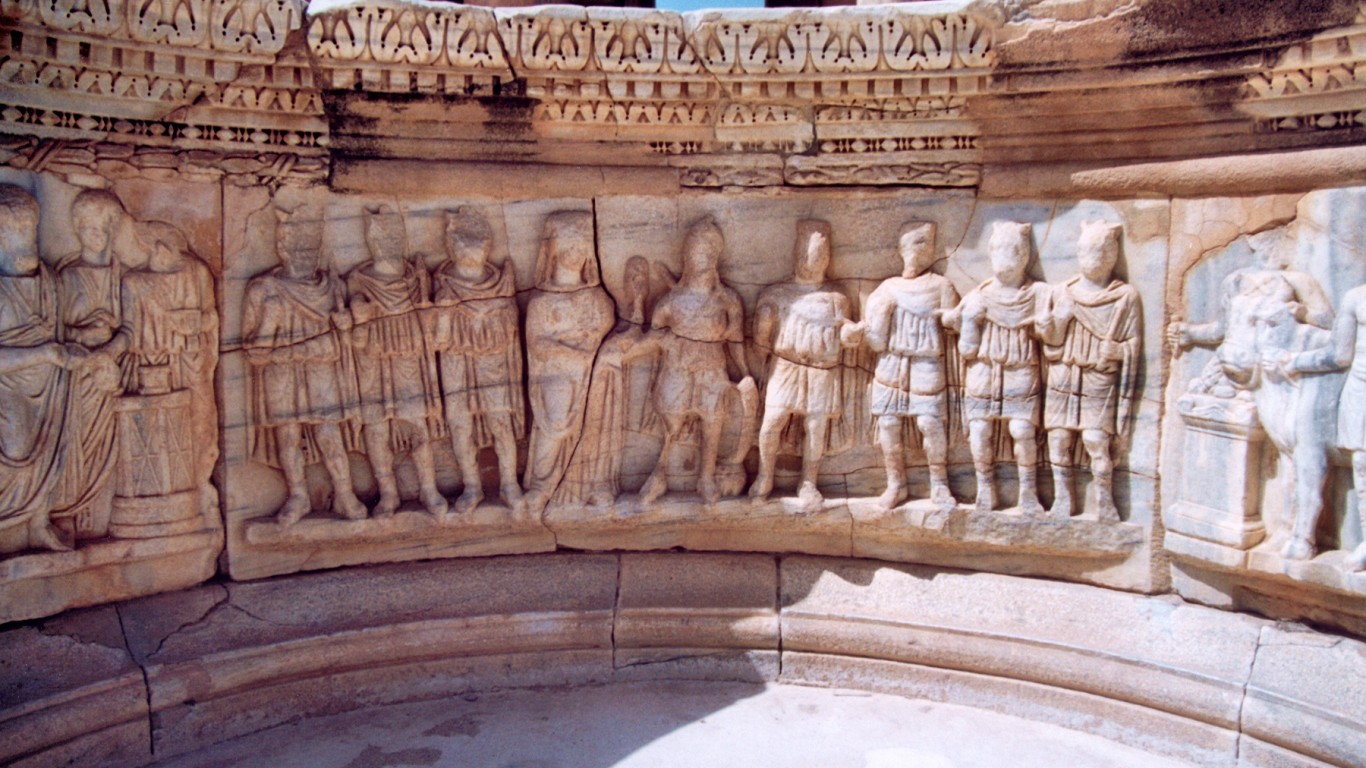
Archaeological Site of Sabratha (2016)
> Location: Libya
Founded by the Phoenicians as a trading site, Sabratha was a conduit for goods made in the interior of Africa. It was eventually taken over by the Romans, who rebuilt it in the second and third centuries. The Archaeological Site of Sabratha is one of five locations in Libya on the List of World Heritage in Danger because of political instability and armed conflict.
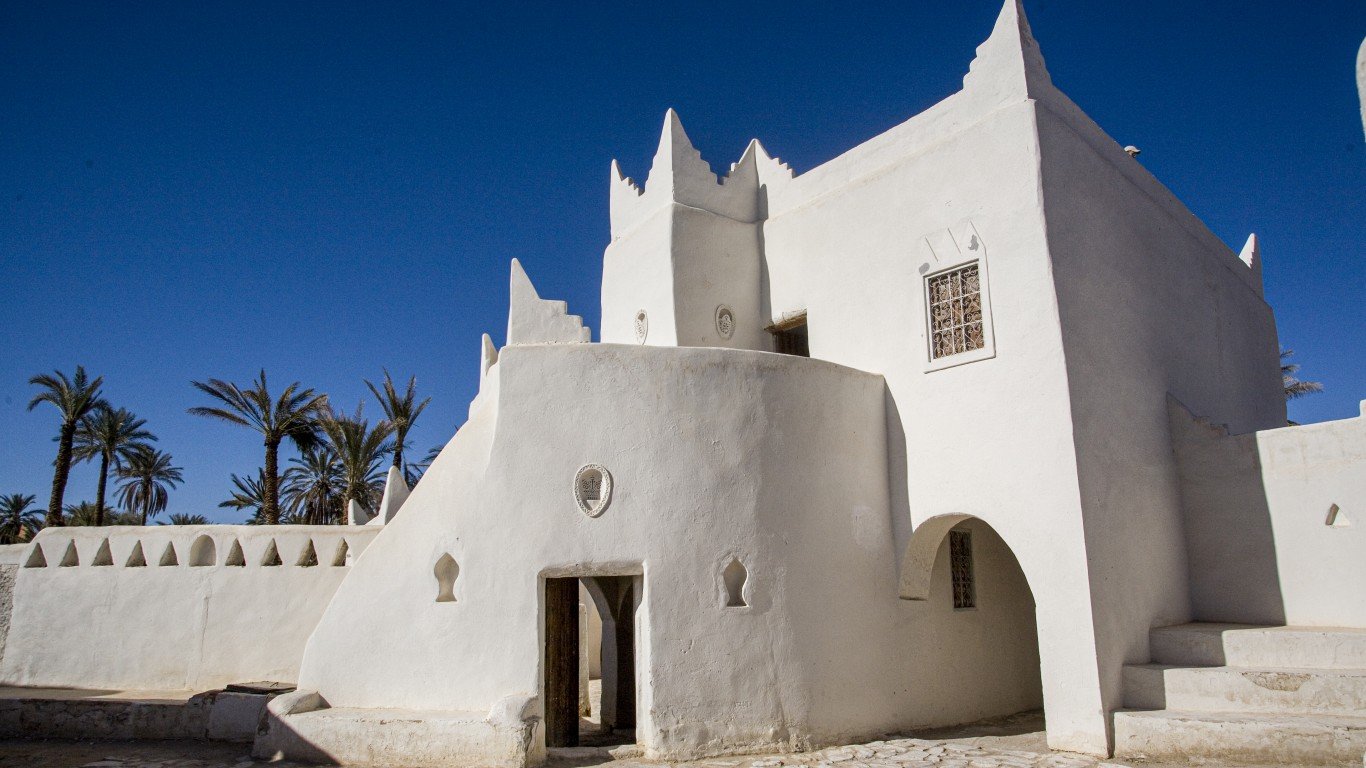
Old Town of Ghadamès (2016)
> Location: Libya
Ghadamès, an oasis town, is one of the oldest pre-Saharan cities and is an example of a traditional housing settlement. The bottom floor was where supplies were stored. The family lived on the next floor, with warrens of passageways. On the top were terraces. Because of political instability and armed conflict, Ghadamès is one of five locations in Libya on the List of World Heritage in Danger.
Rock-Art Sites of Tadrart Acacus (2016)
> Location: Libya
Rock-Art Sites of Tadrart Acacus is on the border with Algeria and contains cave paintings dating from 12000 B.C. to A.D. 100. Vandalism is an ongoing problem at the site, including graffiti. Efforts to protect it have also been set back by armed conflict and political instability. The site is one of five sites in Libya that are on the List of World Heritage in Danger.
Old Towns of Djenné (2016)
> Location: Mali
Old Towns of Djenné comprises four archaeological sites. Djenné is one of the oldest towns in the sub-Saharan region, and its architecture is typical of Islamic influence. About 2,000 traditional houses survived. The region played a key role in trade routes and one of the centers for the spread of Islam in Africa. Erosion, gullying, and unrestrained urbanization threaten the integrity of the Old Towns of Djenné.

